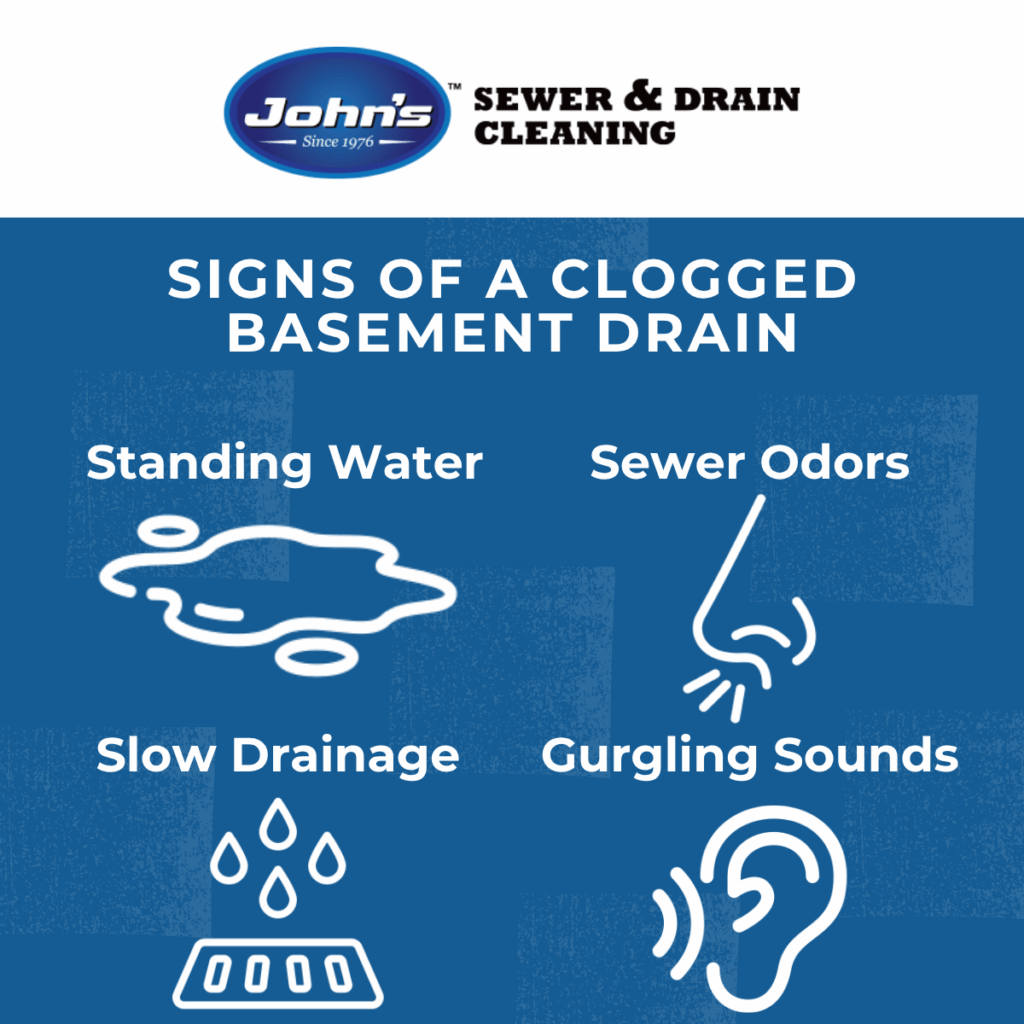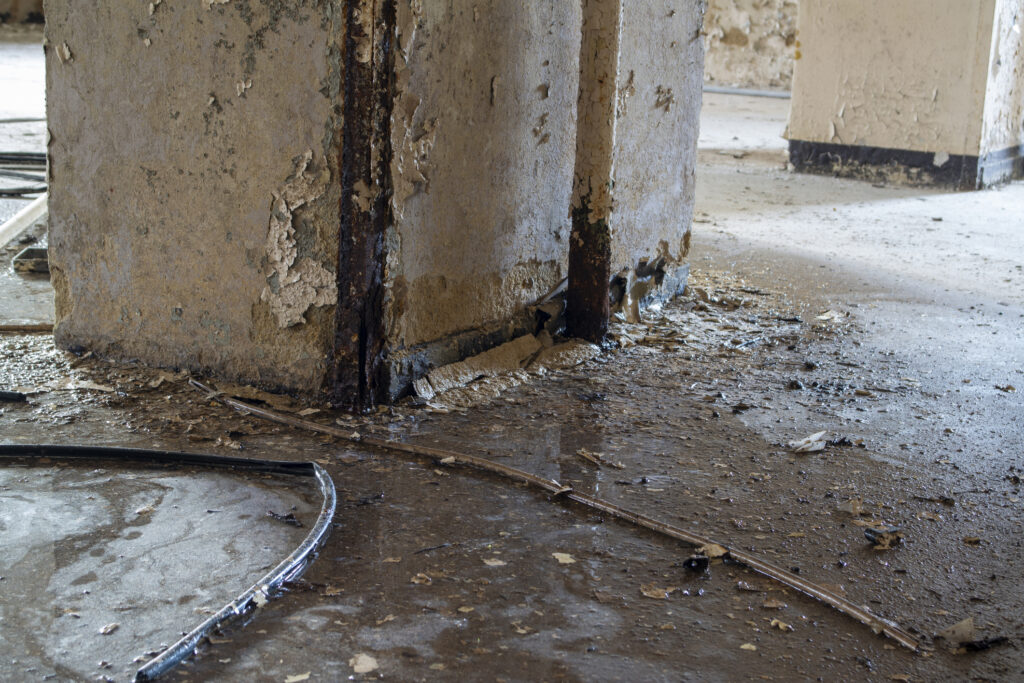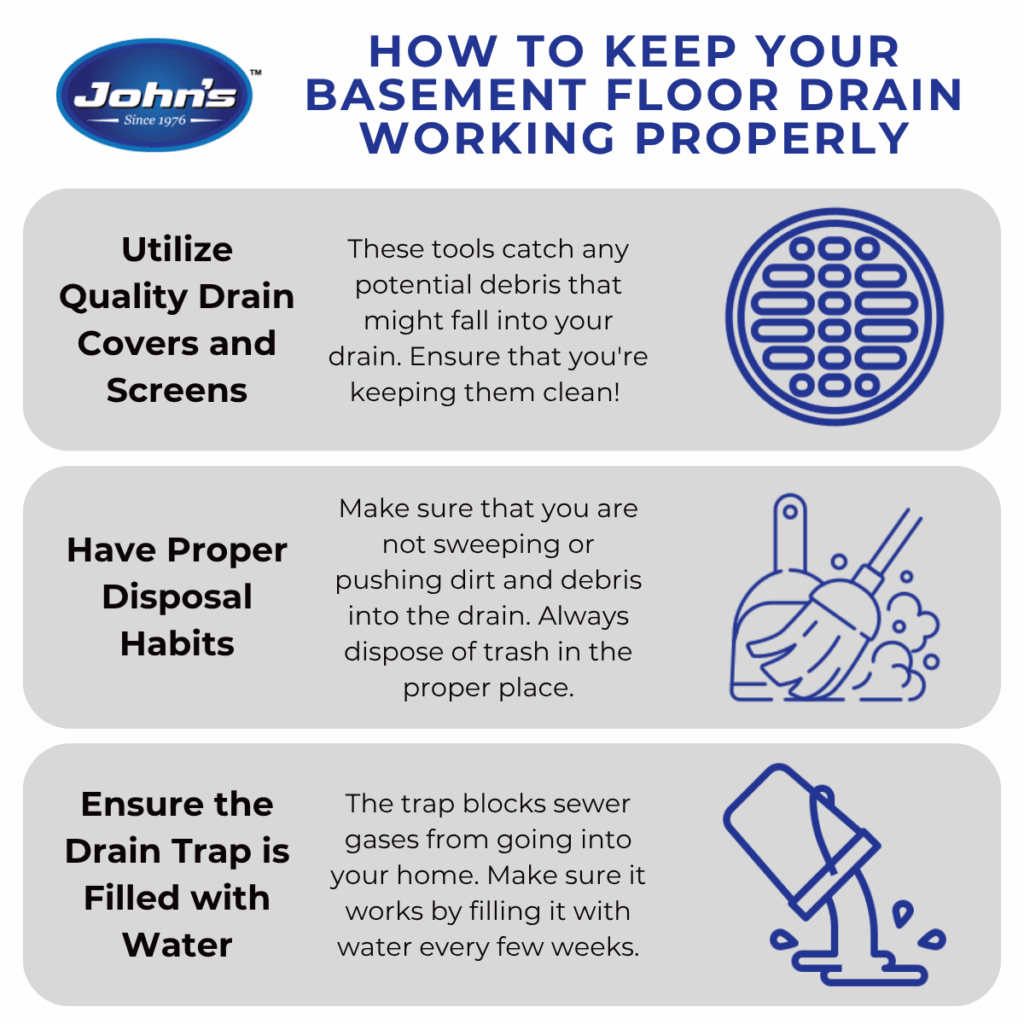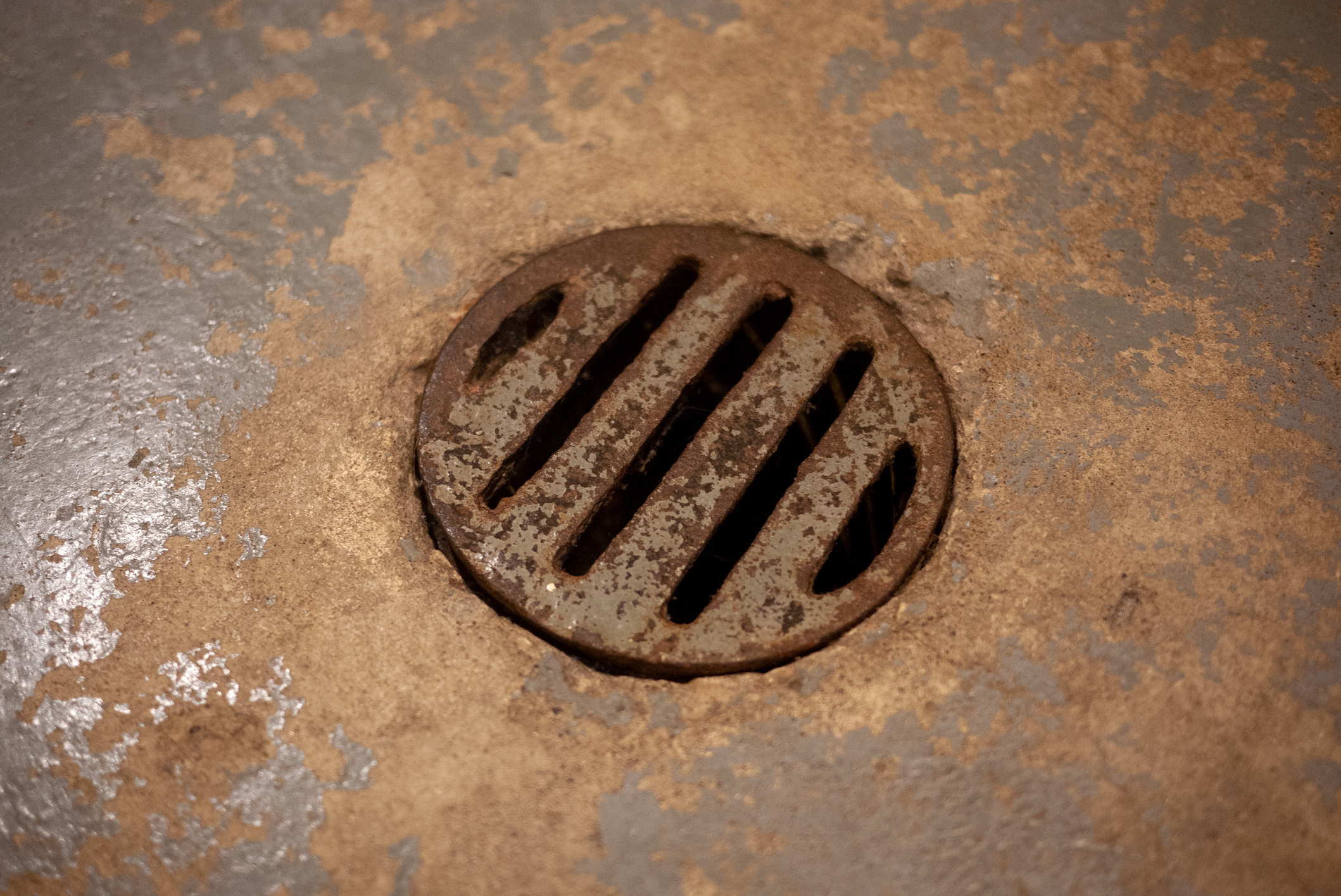Understanding Basement Floor Drains
Your basement floor drain is more than just a hole in the concrete – it’s a crucial component of your plumbing system that helps protect your property from water damage and flooding. Located at the lowest point of your basement, these floor drains serve as the first line of defense against excess water and potential flooding situations. They’re designed to collect and channel away any water that might enter your basement.
These basement drains handle water from various sources including:
- Appliance leaks
- Flooding incidents
- General moisture issues
The importance of a properly functioning basement floor drain cannot be overstated. These drains are strategically connected to your home’s main sewer line or drainage system, working silently to prevent water damage that could compromise your home’s foundation and create costly repair situations. Additionally, basement floor drains contain a special feature called a trap – a U-shaped drain pipe section that holds water to prevent sewer gases from entering your living space.
Common Signs of a Clogged Basement Drain
When your basement floor drain isn’t functioning properly, several warning signs will typically appear:
1. Standing Water
Standing water around the drain is often the most obvious indicator of a clog. If you notice water pooling around the drain instead of flowing smoothly through it, this is a clear sign that something’s blocking the drain pipe. This standing water isn’t just an inconvenience – it can damage your belongings and create ideal conditions for mold growth.
2. Sewer Odors
Unpleasant sewer odors wafting up from the drain should never be ignored. These smells often occur when the water in the drain’s trap has evaporated or when there’s a more serious blockage in your sewer line. A properly functioning drain should never emit foul odors into your basement.
3. Slow Drainage
Slow drainage is another telltale sign that your basement drain is developing a clog. If water takes longer than usual to disappear down the drain, or if you notice it backing up during heavy water usage, it’s time to address the issue before it becomes a more serious problem.
4. Gurgling Sounds
Gurgling sounds coming from the drain are more than just annoying – they’re your plumbing system’s way of telling you something’s wrong. These sounds typically occur when air is trapped in the pipe, often due to partial blockages that restrict proper water flow.

Common Causes of Basement Drain Clogs
Your basement floor drain plays a crucial role in protecting your home from water damage, but it’s susceptible to various types of drain clogs.
Debris and Sediment Build-up
One of the most common culprits is the gradual accumulation of debris and sediment. Over time, dirt, dust, and small particles from your basement floor make their way into the drain pipe. This creates layers of buildup that restrict water flow. Water softener discharge can compound this issue, as mineral deposits and sediment from the softening process contribute to drain line obstruction.
Structural Issues
Beyond surface-level debris, structural problems can lead to serious drain clogs. Tree roots, drawn to the moisture in sewer lines, can infiltrate through tiny cracks or joints. This creates extensive blockages as they grow and expand within the plumbing system. Main sewer line disruptions, whether from shifting soil, aging pipes, or structural damage, can cause backups that first manifest in your basement floor drain since it’s typically the lowest point in your home.
Environmental Factors
The age of your older home significantly influences drain performance, with aging properties more likely to experience clogged basement drains due to deteriorating pipes and outdated drainage systems. Your home’s surrounding landscape plays a vital role too – properties with mature trees are particularly vulnerable to root infiltration. Heavy rain can overwhelm basement drains, while periods of drought can lead to soil shifting that affects pipe alignment. During colder months, the freeze-thaw cycle can stress drain systems, potentially creating or worsening existing clogs.
Any one of these issues, or a combination of several, can cause your basement floor drain to become clogged and require immediate attention.
The Risks of Ignoring Clogged Drains

Property Damage
A clogged basement floor drain isn’t just an inconvenience – it’s a serious threat to your property. As the lowest point in your home, basement drains are your first line of defense against water damage. When these crucial drain lines become clogged, the consequences can be severe and costly.
Water backing up from a clogged drain can quickly create a flooded basement, leading to:
- Severe damage to your home’s foundation
- Impact home’s structural integrity
- Immediate damage of items stored in basement:
- Valuable furniture
- Irreplaceable family memorabilia
- Personal belongings
When your basement floor drain becomes clogged, excess water can seep into carpeting and flooring materials. Once water seeps into these materials, they often need complete replacement to prevent ongoing issues with mold and mildew. The cost of replacing water-damaged flooring, along with any stored items, can quickly escalate into thousands of dollars in repairs.
Health and Safety Concerns
Beyond property damage, a clogged basement drain poses significant health and safety risks to you and your family.
Sewer Gases
One of the most immediate concerns is the potential exposure to sewer gases. Floor drains have special traps designed to block these dangerous gases from entering your home. However, when drains are clogged or the water in these traps evaporates, toxic sewer gases can seep into your living space, creating both unpleasant odors and potential health hazards.
Mold and Mildew
The presence of standing water from a floor drain clog creates the perfect environment for mold and mildew growth. These fungi can develop within 24-48 hours of water exposure and can trigger serious respiratory issues, especially in children, elderly individuals, and those with compromised immune systems. The moisture from backed-up drains can also spread behind walls and under flooring, creating hidden mold colonies that are difficult and expensive to remediate.
Bacteria and Pathogens
Additionally, backed-up drain water often contains contaminated material, including harmful bacteria and pathogens. This contaminated water can pose serious health risks if family members come into contact with it, potentially leading to skin infections or more severe illnesses. The situation becomes even more critical if the backup contains raw sewage, which can introduce dangerous waterborne diseases into your living space.
Prevention and Maintenance Tips
Daily Best Practices
Keeping your basement floor drain in good working order starts with simple daily habits that can prevent major clogs down the road.
Quality Covers and Screens
Installing a quality drain cover and screen is your first line of defense – these simple devices catch debris, hair, and other potential clog-causing materials before they enter your drainage system. Make it a habit to keep these screens clean and replace them if they become damaged.
Good Disposal Habits
Proper disposal practices are equally important. Remember that your basement drain isn’t a convenient disposal system – avoid sweeping dirt, debris, or other materials directly into it. When cleaning your basement floor, collect debris in a dustpan and dispose of it in the trash instead. This simple habit can save you from costly drain cleaning services in the future.
Fill Trap with Water
One often-overlooked maintenance task is keeping your drain trap filled with water. The trap is designed to block sewer gases from entering your home, but it can only do its job if there’s water in it. Since basement floor drains are used less frequently than other plumbing fixtures, the water can evaporate over time. Pour a bucket of clean water down your drain every few weeks to maintain the water seal and prevent unpleasant odors.

Professional Maintenance
While daily care is essential, professional maintenance is crucial for long-term drain health. For most homeowners, scheduling an annual professional plumber is recommended – more frequently if you have an older home or have tree roots near your sewer lines. During these maintenance visits, professionals can catch potential issues before they develop into major problems. Request this service now!
Professional preventive maintenance typically includes thorough cleaning with specialized equipment, such as drain snakes or water jets, which remove built-up sediment and debris that regular maintenance can’t address. These services are particularly important because basement floor drains are typically the lowest point in your house and often the first to show signs of sewer line problems.
Watch for early warning signs that might indicate the need for professional attention:
- Slow drainage
- Gurgling sounds
- Unpleasant odors
These are all signals that shouldn’t be ignored. If you notice excess water backing up into your basement drain during heavy rain or when using multiple plumbing fixtures, don’t wait for your annual maintenance – contact a professional immediately to prevent potential water damage and flooding. Explore our drain cleaning services!
Professional Solutions
When your clogged basement floor drain becomes a pressing concern, John’s Sewer and Drain Cleaning stands ready with comprehensive solutions available 24 hours a day, 7 days a week.
Our team of over 60 professional plumbers brings decades of experience and state-of-the-art equipment to tackle even the most stubborn clogs and sewer line issues.
Rather than simply treating the symptoms, we identify and address the underlying plumbing system issues to prevent future basement drain problems from occurring.
Don’t let a clogged basement floor drain disrupt your life – Contact John’s Sewer today!

